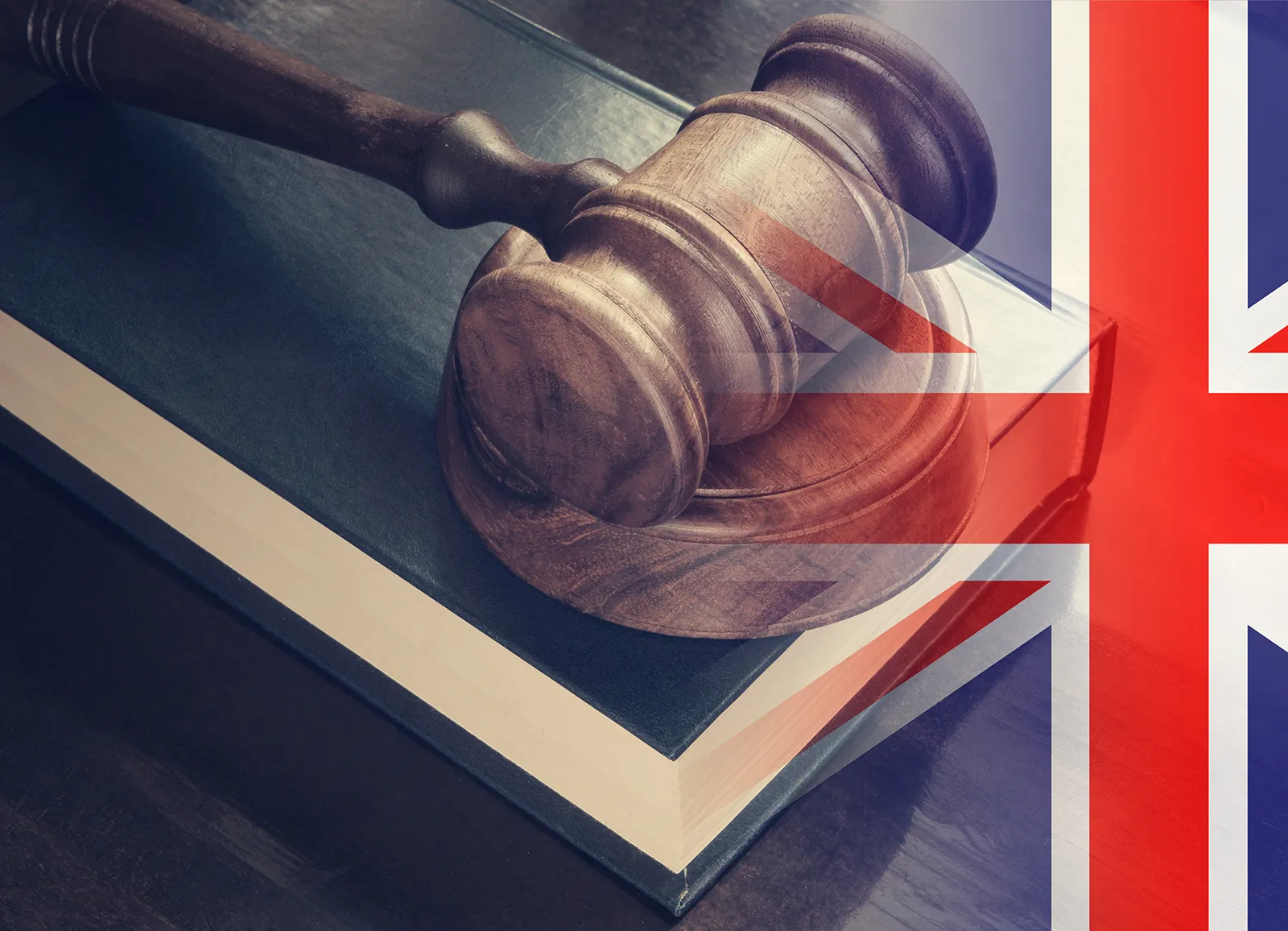Introduction
The idea of going to court over a personal injury claim can be quite daunting.
But if you are thinking about making a claim, or you have just started one, don’t worry! Many personal injury cases are resolved without the court ever being involved, and fewer still go to an actual court hearing. The majority of personal injury claims are settled by agreements between the parties rather than a judge’s decision.
There is, however, always a chance that your personal injury claim will involve court proceedings, and in this guide we will explain how and when this might happen. We’ll also peel back some of the mystery that surrounds the court process so that you can get a better idea of its different stages and what you can expect in each.
Common misconceptions of court
Before getting into the nitty-gritty of how the court system works in the world of personal injury, it’s worth clearing up a few common misconceptions:
A civil court is very different from a criminal court
As personal injury claims are matters of civil law, they are dealt with by the civil court system.
From TV and film, you are probably more aware of how a criminal court looks and operates. But this bears little resemblance to a civil court.
There will be no jury, and the judge is not there to determine any guilt or innocence over the circumstances of the injury. Their role is to weigh up the evidence and the arguments of both sides and resolve the dispute, finding in favour of one party or the other on the issues in contention.
In criminal proceedings, the standard of proof is beyond reasonable doubt. Whereas, in civil court cases, the standard of proof is on the balance of probabilities, which is a lower standard of proof than the criminal standard.
The courts themselves are also different. Criminal courts include the Magistrates’ Court and the Crown Court, whereas civil matters are handled most commonly in a County Court which is local to the parties.
Issuing court proceedings is not the same as ‘going to court’
Issuing court proceedings is the beginning of the court’s involvement in a claim. It starts the court process but is not the same thing as going to a court hearing or trial.
Instead, issuing court proceedings is the first step of the (potentially long) court process, which generally involves the formal exchange of information between the parties, to meet deadlines set by the court.
Court proceedings may end in a court hearing, but it is not inevitable; negotiations between the parties can continue after court proceedings have been issued, and most personal injury claims will settle before they reach a hearing.
When might a personal injury claim be issued at court?
The rules around civil claims emphasise that issuing court proceedings should be seen as a last resort. Parties to a dispute are encouraged to settle claims where possible, and this is something we always strive to do at Truth Legal.
However, there are some situations where it is necessary to issue court proceedings so that you can continue with a claim. The three most common situations are set out below:
Limitation
In most personal injury cases, you have 3 years from the date of your injury in which to settle your claim or begin court proceedings against those you hold responsible. If you fail to do so, your claim will be considered out of time and it is unlikely you will be allowed to continue with it.
However, there are some exceptions to this rule which can change the time limit. For example, if you suffered an injury when you were under 18, the 3-year time limit will start running from your 18th birthday, instead of the date of the accident. On the other hand, some exceptions can shorten the time limit; accidents which fall under the Montreal Convention (such as injuries suffered on an international flight) have a limitation period of 2 years instead.
Because this time limit can prevent claims from continuing, your lawyers will need to keep the relevant limitation date in mind, and may need to issue court proceedings to protect your right to claim.
It’s quite common for this to happen in situations where the limitation date is approaching and a claim is not ready to settle – for example, when medical evidence is still required to show the full extent of the injuries.
If you have instructed solicitors and they have missed the limitation deadline on your claim – without issuing court proceedings protectively – this could be an example of professional negligence. You may be able to make a separate professional negligence claim against them for the lost compensation their negligence has cost you.
An ongoing dispute
Sometimes, a party defending a personal injury claim (or their insurers) will deny that they are responsible for your injuries – or they may dispute the amount of compensation you should receive.
If so, it may be necessary to issue court proceedings so that the court can ultimately decide the issues being disputed.
Issuing court proceedings – or even just the prospect of doing so – may be enough to increase a party’s willingness to negotiate.
Part 8 court proceedings
There are circumstances when it is necessary to seek the court’s approval on matters which are largely agreed by the parties. In these situations, where there is unlikely to be any ‘substantial dispute of fact’, an alternative form of court proceedings can (and often must) be issued. These are called Part 8 proceedings (after Part 8 of the Civil Procedure Rules which govern them).
Part 8 court proceedings are used most frequently when settling a claim made on behalf of someone who is under the age of 18, or who does not have capacity to make the claim themselves (known as a protected party). Because both sides of the claim have agreed a settlement figure, there is no ongoing dispute, but because the settlement is being made for someone who does not have legal capacity to agree to it personally, the court is needed to approve the settlement.
The process for Part 8 matters is much simpler than the court proceedings covered in the majority of this guide.
A Part 8 claim will also be issued for a claim being dealt with under the MOJ Portal process which is not yet ready to settle but in which the 3-year limitation deadline is approaching.
A Part 8 court hearing will be set relatively quickly. You will have to attend this if you are acting as the Litigation Friend for a child or protected party, along with the child or protected party themselves. However, the hearing will be quite informal, and usually involves the judge asking a few questions to ascertain that the settlement is fair.
What are the civil court tracks?
Personal injury claims, as well as other civil cases, are allocated to different court ‘tracks’ shortly after they are issued at court. These tracks are important as they will determine how your claim progresses in its journey through the court.
There are four court tracks:
- Small claims track
- Fast track
- Intermediate track
- Multi track
Small claims track
This track covers claims of the lowest anticipated value. It includes any claim where the anticipated total value is not more than £10,000 – provided there are no complicated issues to deal with.
For personal injury claims, the anticipated value of your injuries is also considered, as well as how your injuries came about. In general, the claim will fall into the small claims track in the following situations:
- Road traffic accidents where the injuries are valued at no more than:
- £5,000 or
- £1,000 for children and more vulnerable road users, such as pedestrians, cyclists, motorcyclists etc.
- Other kinds of personal injury claim (such as accidents at work or public liability claims) where the injuries are valued at no more than £1,500
Because legal costs are strictly limited in the small claims track, it is usually the case that the claimant will have little to no legal representation, meaning they will be required to deal with the claim themselves.
Fast track
A claim will be suitable for the fast track if its total value is over £10,000 but not more than £25,000. Or it otherwise exceeds the small claims thresholds discussed above.
Fast track claims are unusual in that the majority of them are dealt with through an online Claims Portal rather than the more involved court process which is covered in greatest detail in this guide. We explain how fast track claims are divided in this way when we look at how court proceedings are issued (in the next section).
Intermediate track
A claim will normally be allocated to the intermediate track if its value is above £25,000 but less than, or equal to, £100,000.
The intermediate track was introduced in October 2023. It will only apply to your claim if your ‘cause of action’ (which is usually the date you were injured) occurred on or after 1st October 2023. Otherwise your claim will fall into the fast track or multi track as appropriate.
Multi track
The multi track is reserved for the most complicated claims and for those with total values of over £100,000.
Lower value claims can sometimes be allocated to the multi track if the court considers that other tracks, with their limits on expert witness evidence and court hearing length, would be insufficient to deal with the claim appropriately. For example, this can happen if you have suffered unusual or complex injuries which need the evidence of several expert witnesses to document properly.
The multi track procedure shares many similarities with the fast track and intermediate track processes. But there are significant differences, which we will also cover later in the guide.
How are court proceedings issued?
There are two main methods by which court proceedings are issued in a personal injury claim. Which one will apply depends on the circumstances of your case.
In any event, your lawyers will always need to obtain your authority before court proceedings are issued.
Sending a claim form
The ‘traditional’ method of issuing court proceedings is to send a claim form to the court with various documents in support of the case. You may see this method referred to as Part 7 court proceedings (after the relevant Part of the Civil Procedure Rules).
However, this is only used when the claim is not going through the online Claims Portal process (described below).
Court proceedings issued by claim form are often the most complicated and the most involved, and so the majority of this guide will focus on this process. But below is a brief overview of the other types of process as well as links to some other resources to help you find out more about them.
The Claims Portal
Since 2010, the Claims Portal has been the standard way in which straightforward fast track personal injury claims are dealt with.
The Claims Portal provides an online system through which the parties can communicate and exchange documents. The process also involves a strict set of rules and a timetable for when information has to be submitted.
If a settlement can’t be agreed or the claim’s limitation date is approaching, court proceedings can be issued through the Portal in what’s called ‘Stage 3’ of the process – though not all portal claims will have to go to this stage. You can read more about the Stage 3 court process in our blog here.
As mentioned above, the rest of this guide focuses on non-portal claims (i.e. Part 7 court proceedings). However, if your claim is going through the Claims Portal, there are many underlying similarities in the information and general steps required in Stage 3 proceedings – so it may still prove helpful to you.
You can also read our blog on the difference between court proceedings in portal claims and non-portal claims for more information.
The Official Injury Claims portal
The Claims Portal described above is not to be confused with the much newer Official Injury Claim portal.
This was introduced in 2021 to accompany the reforms to whiplash injury claims arising from road traffic accidents. You can read more about these reforms and the process involved here.
If court proceedings become necessary, due to a dispute arising for example, it is possible to begin court proceedings using the Official Injury Claims portal system. The Official Injury Claim website has some guides on this. However, the court proceedings will then continue outside of it.
This kind of court proceedings is beyond the scope of our guide, but many of the topics discussed will be relevant to them – in particular the sections on ‘key documents when issuing court proceedings’ and a number of the stages in ‘the court process’ section.
Key documents when issuing court proceedings
Issuing court proceedings requires a number of important documents. Taken as a whole, these will give a detailed picture of various aspects of your claim, including:
- The circumstances of your claim
- The allegations you are making
- The injuries you have suffered
- Any other losses you have incurred
- The evidence you are relying upon to prove these different parts of the claim
It may be the case that you do not have all of the evidence you need at this stage. For example, if you are still suffering from your injuries, further medical evidence may be needed to document your ongoing symptoms. Additional evidence can be added after proceedings are issued, but the documents sent at the time of issue should be as complete and up-to-date as possible.
Your lawyers will need your authority to issue your claim and will ask you to carefully check all of the necessary documents before they are sent to the court.
The most important documents are the following:
The N1 Claim Form
This form contains the basic details of the claim. It will set out:
- The names and addresses of the parties
- Brief details of the claim circumstances
- The anticipated value (which is used to allocate the claim to a track, as discussed above)
- The County Court preferred for any hearing
- A Statement of Truth (see ‘What is a Statement of Truth?’ below)
There is also a section on the form for the Particulars of Claim. However, in all but the most straightforward cases, the Particulars of Claim will be attached as a separate document (discussed below).
You can see a blank copy of the N1 Claim Form on the government’s website.
The court fee
There is a fee to pay for issuing a claim, and this will also need to be entered on the Claim Form. The amount of the fee will depend on the value of your claim.
Sometimes it is possible to get money off your court fees – known as fee remission. At the time of issuing your claim, it is likely that your lawyers will also send you a form which covers fee remission. It is extremely important that you co-operate with your lawyers and complete this form as, if an application for fee remission is not made, you may be unable to recover the cost of issuing your claim as well as any subsequent court fees.
What is a Statement of Truth?
The Statement of Truth is an important part of many legal documents. By signing a document which contains a Statement of Truth, you are certifying that you genuinely believe the facts stated in the document are true – and accepting that there could be legal proceedings made against you if the document contains anything, presented as fact, which you know or suspect to be untrue.
This may sound scary, but as long as you read the document carefully, and hold a genuine belief in the truth of the document’s contents, there’s nothing to worry about.
If you do find anything in the document which you know, or think, may be untrue it is crucial that you discuss this with your lawyer before signing the document.
Particulars of Claim
In most cases the Particulars of Claim will be presented as a separate document attached to the Claim Form.
As the name suggests, the Particulars of Claim will provide an overall summary of the case details. In a personal injury claim, your Particulars of Claim will contain the following sections, though there may also be others depending on your situation:
- A summary of the accident circumstances
- Allegations as to why you hold the Defendant responsible for your injury
- A summary of the injuries you sustained
- A list of the medical reports upon which you will rely
- Details of the losses you have incurred (although usually these will be covered in the separate Schedule of Loss – discussed below)
- A Statement of Truth (see ‘What is a Statement of Truth?’ above)
Truth Legal’s Legal Library has several examples of Particulars of Claim for different kinds of personal injury matter. These include Particulars of Claim for an accident at work and for a trip on a public footpath.
Schedule of Loss
The Schedule of Loss provides details of all of the damages and other losses which you are claiming due to the accident. This can include losses which you have already incurred, as well as losses that you are predicted to incur in future.
The Schedule of Loss should contain the amounts being claimed for each of these things where possible but, often, if you are awaiting further medical reports or evidence of losses, some ‘heads of loss’ will have to be marked as ‘TBC’ and quantified later.
Typically, Schedules of Loss for higher value claims have more heads of loss included, and also provide greater detail on each one.
The Schedule of Loss will need a signed Statement of Truth (see above) when it is submitted as part of the documents to issue court proceedings.
An example Schedule of Loss for an assault at work claim can be found in our Legal Library.
Also, our free ebook on personal injury compensation can give you a deeper understanding of the kinds of loss which might be included in a personal injury claim.
Issuing and serving court proceedings
Once you have approved the claim form and all accompanying documents, your lawyers will send them to the court so that your claim can be issued.
These documents will have to be formally sent to the Defendant in a step called ‘service’. This can either be done by the court, or you and your lawyers can choose to serve them.
If the latter option is taken, your lawyers then have 4 months from the date of issue to serve the proceedings on the Defendant. There can be good reasons for doing this; for example, if the limitation date of your claim is approaching and you are waiting for further evidence, it can protect your right to claim without submitting incomplete evidence to the Defendant.
With delayed service of documents, it is extremely important that you stay in regular contact with your lawyers throughout the delay period as they may need to take urgent instructions from you, or they may need you to attend medical appointments, sign documents, or gather evidence in support of your losses.
The court process
Once your claim has been issued and served, it will make its way through the court process towards a final hearing or trial.
Remember though that claims can be settled at any time up to the final hearing date – if the parties come to an agreement – and most claims will be resolved in this way before a final hearing.
Some of the key steps in the court procedure are set out below. They are key steps in fast track claims (which aren’t going through the Claims Portal), intermediate track claims, and multi track claims. These 3 court tracks share many similarities in procedure, but any differences will be explicitly stated.
The Defendant’s response to the claim
If they wish to defend your claim against them, the Defendant must respond to your court documents by serving a Defence, which sets out their position in relation to the allegations you’ve made and losses you are claiming.
In the Defence, the Defendant may deny some or all of the allegations in your Particulars of Claim, or they may admit liability for your injuries.
The Defence must be filed with the court within 14 days of receiving service of your Particulars of Claim. However, this can be extended by a further 14 days if the Defendant files an Acknowledgement of Service.
You and your lawyers can also agree to allow the Defendant extra time to file their Defence, but the absolute maximum period of time they can have is up to 56 days after they received your documents.
Proposed Allocation to Track
After receiving the Defence, the court will then send both parties’ legal representatives a notice indicating the court track to which they are proposing to allocate the case (see above for the different court tracks and the kinds of case suitable for them).
However, this allocation is only provisional. You and your lawyers, as well as the Defendant, will have to submit Directions Questionnaires by a certain date, and these will form the basis for the court’s final allocation of the claim.
Directions Questionnaires
As well as helping with allocation, Directions Questionnaires assist the court in setting a timetable for the future management of the claim.
Each party will have to submit their own Directions Questionnaire, along with a set of draft ‘Directions’, and the court will use them as the basis for the Directions it orders (see the next step).
The Directions Questionnaire will contain various details from the party submitting it, including:
- Their preferred court track for the claim, with reasons why
- Whether they believe a trial is needed to resolve the claim
- Whether expert evidence would be needed at the trial
- Whether any other witnesses need to be called at the trial
- (For fast track and intermediate track claims) their view on the level of complexity involved in the claim. This has a bearing on the amount of legal costs that a Defendant can be ordered to pay.
There is also the option in the Directions Questionnaire to request a one month ‘stay’ of the proceedings. Effectively, this means to pause the proceedings, and it is usually done in the hope that a settlement can be agreed, or to allow time to obtain further evidence.
You can find a blank copy of the Directions Questionnaire on the government’s website.
Directions
Once the court has considered the parties’ Directions Questionnaires, they will order the allocation of the claim to a track (in a Notice of Allocation). Often this track will be the same one proposed by the court earlier in the process, though it may change based on what the parties have submitted.
The court will also set Directions appropriate to the track, and based upon the draft Directions from the parties.
What are Directions?
Directions are essentially a timetable for the claim’s progression. They will specify when certain stages in the court process are to take place. The court can impose penalties on any party who fails to meet these deadlines. Your lawyers will keep track of these deadlines, but it is important to co-operate with them, and provide any requested information as soon as you can so the deadlines can be met.
It is often possible for the deadlines set by the Directions to be varied if the parties agree to do so. In some situations, the court may need to be provided with a copy of a written agreement between the parties.
Where a party disagrees with changing a Direction, the party seeking the change can still apply to the court to ask it to be varied.
In multi track claims and higher value intermediate track claims, the directions set are likely to be much more detailed and involve more steps for the parties to comply with before a final hearing can take place.
All of the following stages in this section are typical Directions that a court might set in a fast track claim. These will also occur in intermediate track and multi track claims but often with longer timescales. In multi track claims, and some of the more complicated intermediate track claims, there are also some additional steps not normally encountered in fast track claims. See ‘Differences between fast track, intermediate track, and multi track’ below for more on these.
Service of List of Documents
At this stage, the parties have to provide a List of Documents. It will detail all of the documents that they have in their possession which directly relate to the claim. This includes documents which may support the claim but also documents which may adversely affect it.
Your lawyers will discuss this with you at the relevant time and you will have to carefully check the list prior to signing the Statement of Truth.
Each party can then request copies of any documents they wish to inspect from the other side’s list.
Typical fast track timescale – 4 weeks from the date of the court’s Notice of Allocation.
Exchange of lay witness evidence
Lay witnesses are those who can speak to the facts of what happened – such as what they heard, saw, or did. Statements from all of the lay witnesses the parties intend to rely upon will be exchanged at this stage.
The witness statement itself is a formal document setting out all of the evidence that the witness would give if they were called to give evidence orally at a court hearing. It has a Statement of Truth which must be signed by the witness in order to be a valid witness statement.
You will have to provide a witness statement as well. Your lawyer will take details from you and collate the information into the required format. You will then have to carefully check the statement and sign it once you are sure it is accurate and complete.
Typical fast track timescale – 10 weeks from the date of the court’s Notice of Allocation.
Service of expert witness evidence
Expert witnesses are those who provide their professional opinion on aspects of the claim. In most cases, the only expert witnesses will be the medical experts who have assessed your injuries. But in some cases, especially more complicated ones, there might also be evidence from other kinds of expert (for example, engineers, occupational health experts, or care experts).
In fast track claims, it is unusual for Defendants to have permission to rely upon their own expert evidence. So at this stage, the court will usually direct that you and your lawyers have to serve all the expert evidence you are seeking to rely upon.
Typical fast track timescale – 14 weeks from the date of the court’s Notice of Allocation.
Service of updated Schedule of Loss
This stage will allow you and your lawyers to file an updated Schedule of Loss, to cover all of the financial losses for which you are claiming.
Service of Counter-Schedule of Loss
The Defendant will also have the opportunity to serve a Counter-Schedule outlining any heads of loss which they specifically agree or dispute.
Filing of Listing Questionnaires
The Listing Questionnaire (also known as a Pre-Trial Checklist) is a form which the parties have to complete to assist the court in the final stages of managing the claim. It enables the court to determine if Directions have been complied with up to this point, and whether any further Directions are required.
Much of the information covered by the Listing Questionnaire is similar to the Directions Questionnaire – though now further along in the court process.
A blank copy of the Listing Questionnaire document can be found on the government website.
Typical fast track timescale – 20 weeks from the date of the court’s Notice of Allocation.
Trial Window
The final stage is for the court to set a window of time in which to list a trial date for your claim.
As this stage approaches, the court will provide your lawyers with further Directions on making preparations for the trial – including when the trial bundles should be filed and served.
Typical fast track timescale – 30 weeks from the date of the court’s Notice of Allocation.
Differences between fast track, intermediate track, and multi track
Each of the court tracks will involve essentially the same steps as described above. However, multi track claims, and to a lesser extent intermediate track claims, are more complicated than fast track claims and of higher value.
This has a number of consequences.
- The timescales allowed for each step by the court will usually be much longer
- The court will have more flexibility in the way it manages the case and sets Directions – based upon the individual needs of the case itself. This means the way that each multi track claim, and each intermediate track claim, will progress through the court process will differ from case to case.
- In multi track claims, the Defendant is likely to be granted permission to instruct their own expert witnesses – to assist with defending the claim being brought against them.
Costs budgets are also required in multi track claims. A costs budget sets out the party’s estimated costs for each stage of the proceedings. Your lawyers will ensure that these are prepared, filed, and served in time.
Also on the point of costs, fast track and intermediate track claims are subject to a Fixed Recoverable Costs regime. This limits the amount of your legal costs (as the party making the case) for which the Defendant can ordered to pay.
Aside from the steps of the process outlined above, there are two other steps to be aware of, though usually only if your claim has been allocated to the multi track. These are:
- Case Management Conferences
- Pre-Trial Review
Case Management Conferences
A Case Management Conference is a kind of court hearing, usually held remotely, where both parties are represented by lawyers and barristers. Ordinarily, you will not be required to attend any Case Management Conferences.
They are intended to allow the court to:
- Review the cases prepared by the parties up to that point
- Set Directions for future management of the case
- Try to narrow the issues between the parties
There may be more than one Case Management Conference held during the course of a claim, and they can be set to take place at any time in the court process after the Notice of Allocation.
These can theoretically take place in all 3 main court tracks. However, it is rare for them to be ordered in any but multi track claims and those intermediate track claims with more complicated issues or severe injuries
Pre-Trial Review
Pre-Trial Reviews are hearings held in advance of the trial to make final preparations for it.
They are similar to Case Management Conferences in that they:
- Are usually held remotely;
- Will involve an assessment of the case and the outstanding issues between the parties; and
- Allow the court to set any further Directions which are considered necessary or conducive
However, the Pre-Trial Review will also deal with the timetable for the days of the trial itself.
Pre-Trial Reviews are only held in complex multi track matters, where a long trial is anticipated. They can be directed to take place by the court any time after the Notice of Allocation – but they will normally occur in the run up to the trial window, after the Listing Questionnaires (or Pre-Trial Checklists) have been filed.
The final hearing or trial
The chances of your claim going all the way to a final hearing or trial are very low – but it is possible.
Your lawyers will create a trial bundle, containing a summary of the case, and all of the documents and evidence which each party is relying upon. This is then filed with the court before the listed trial date, in accordance with the court’s Directions.
For fast track claims, the trial should last no more than 1 day.
For intermediate track claims, the trial should last no more than 3 days.
For multi track claims, the trial is likely to last at least 3 days.
In most cases, you will be required to attend the trial. Some trials can be conducted ‘on paper’, meaning that you would not need to attend in person, although it is often best to be there unless you have a very good reason otherwise.
In general, the more complicated the case the more likely you will have to give evidence and answer questions from the judge at the trial.
Get in touch for more assistance
Truth Legal has helped a great many people to make successful personal injury claims. Our expert lawyers have an excellent record of guiding clients through the complexities of court proceedings and securing favourable outcomes for them.
If you are thinking about making a personal injury claim, or you would like to discuss transferring an ongoing claim to us, contact us today.
More Legal Guides
Comprehensive and free legal guides from Truth Legal Solicitors.












